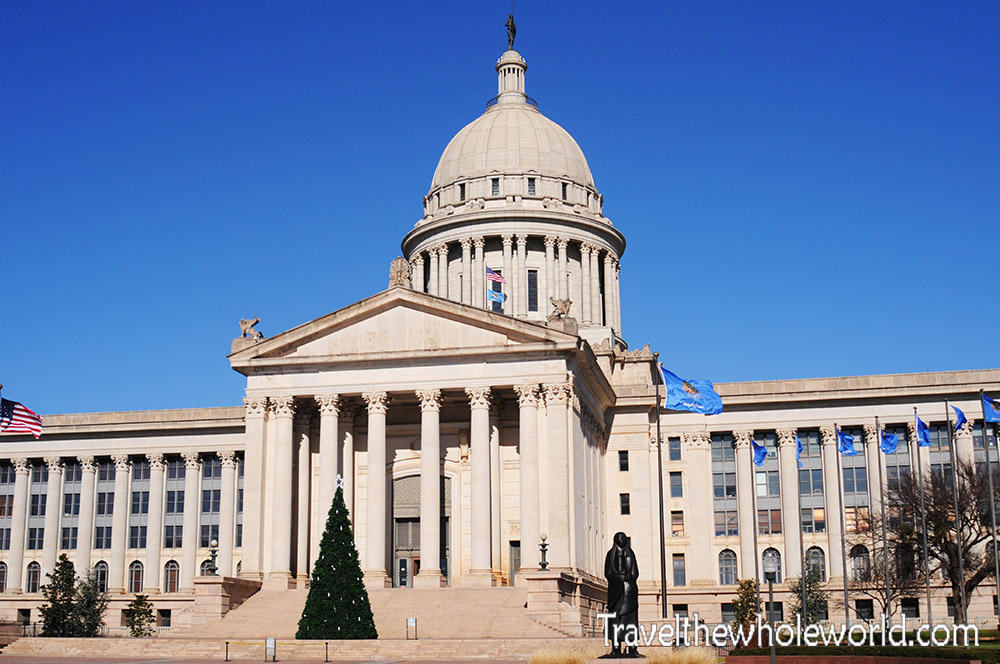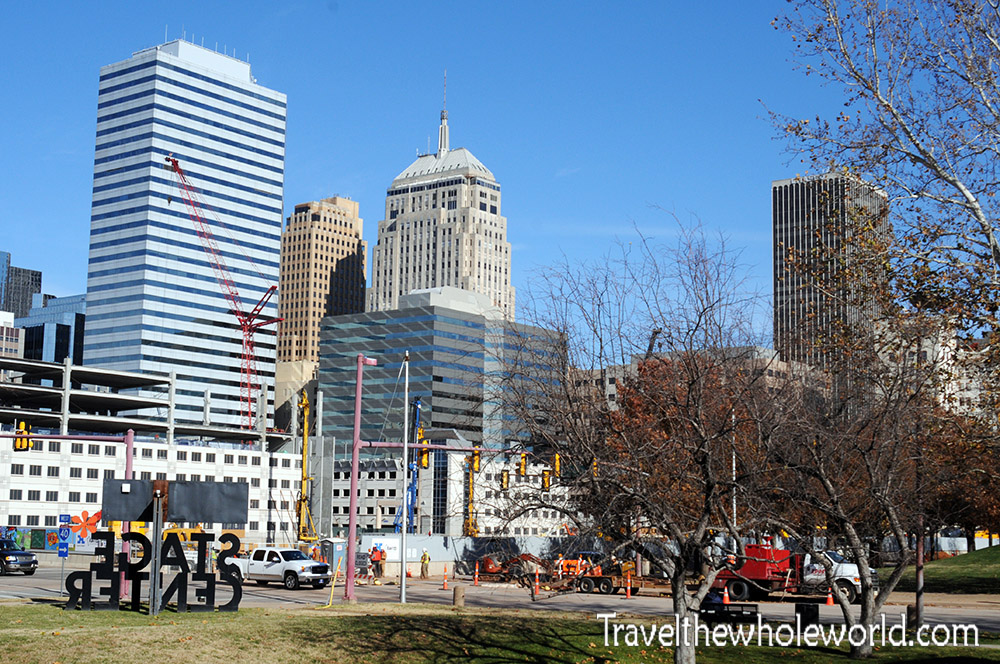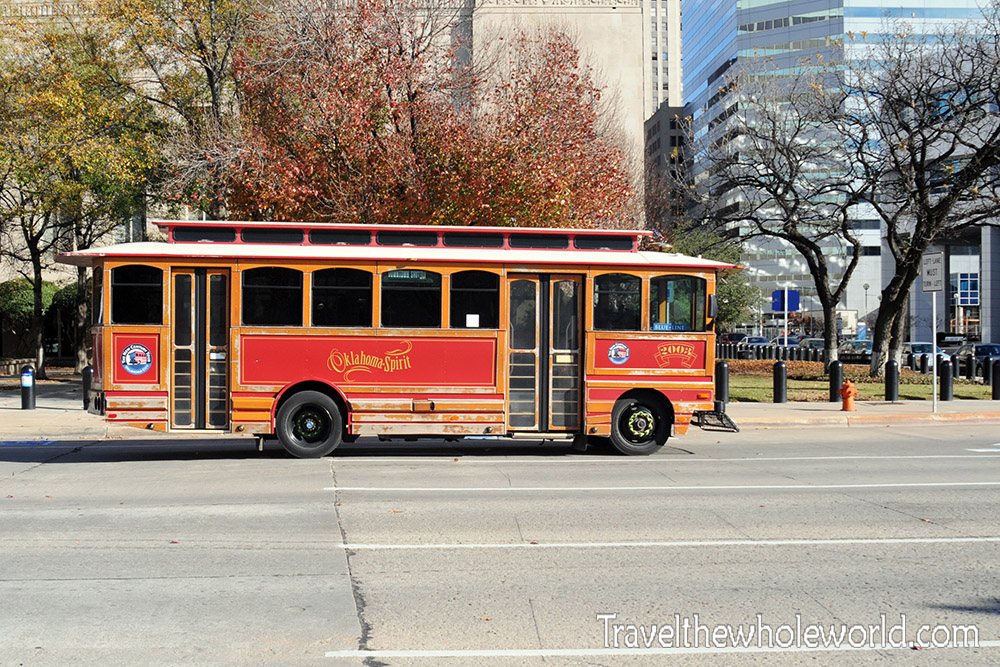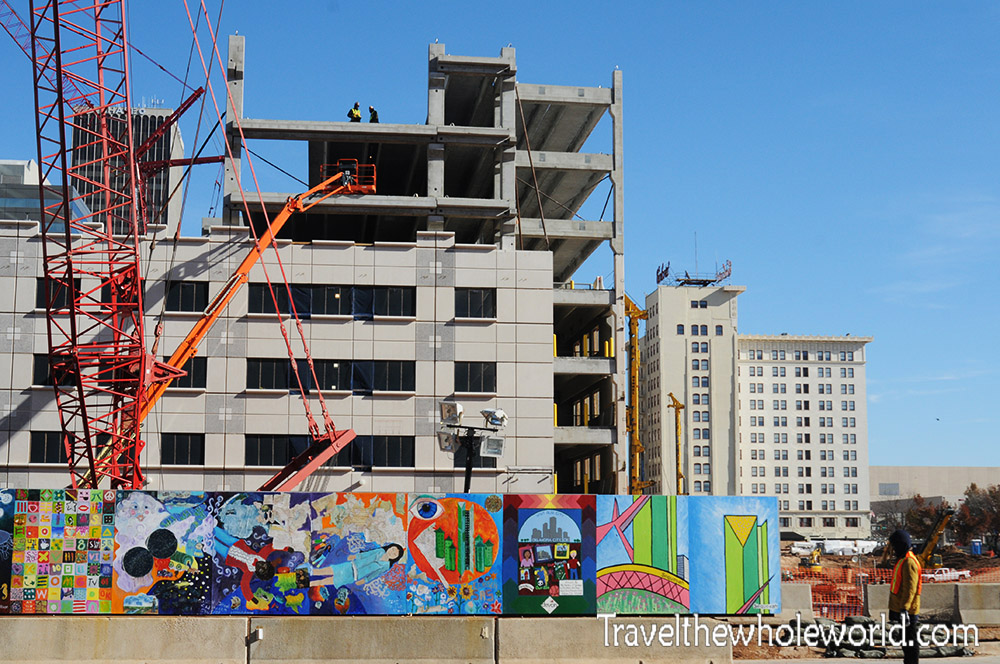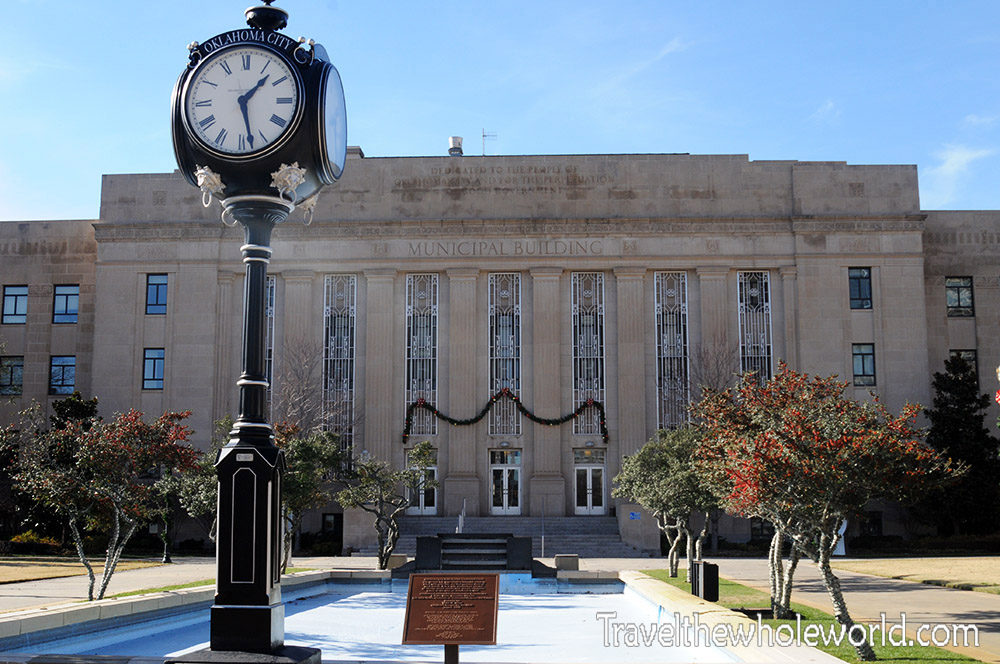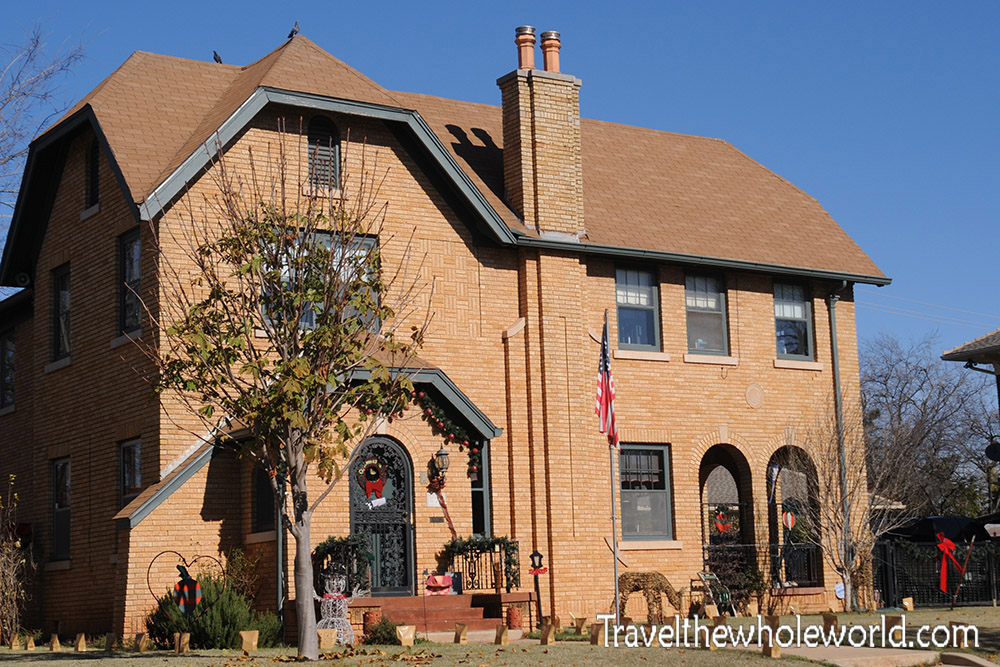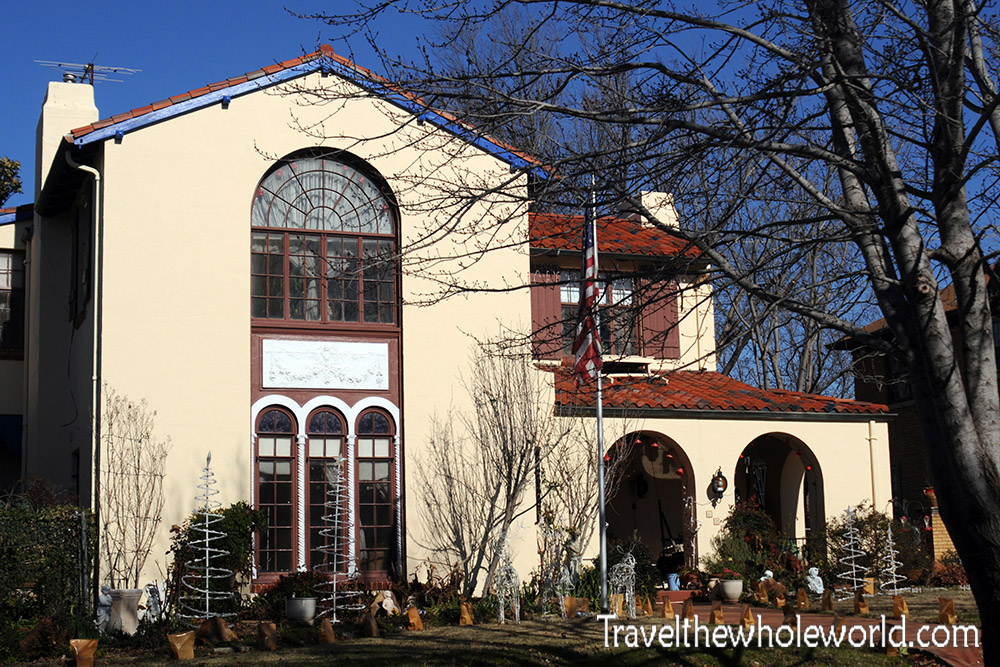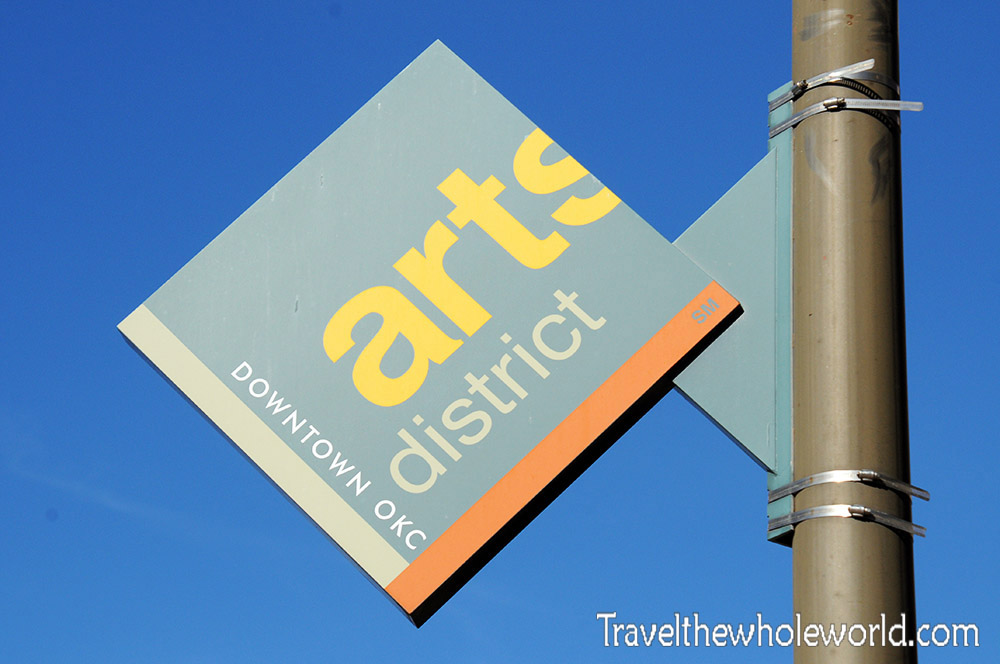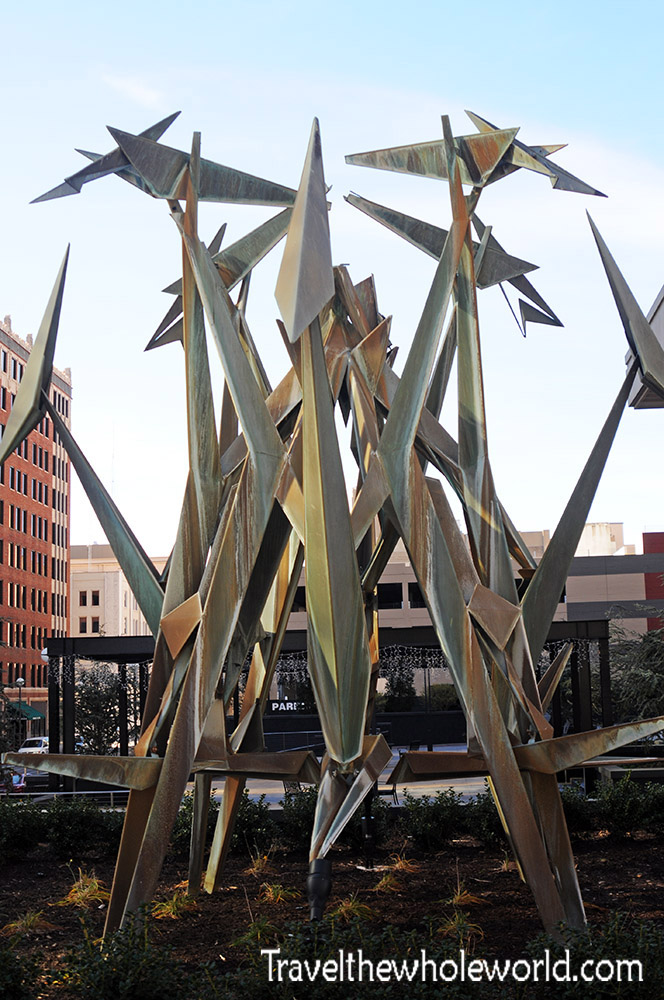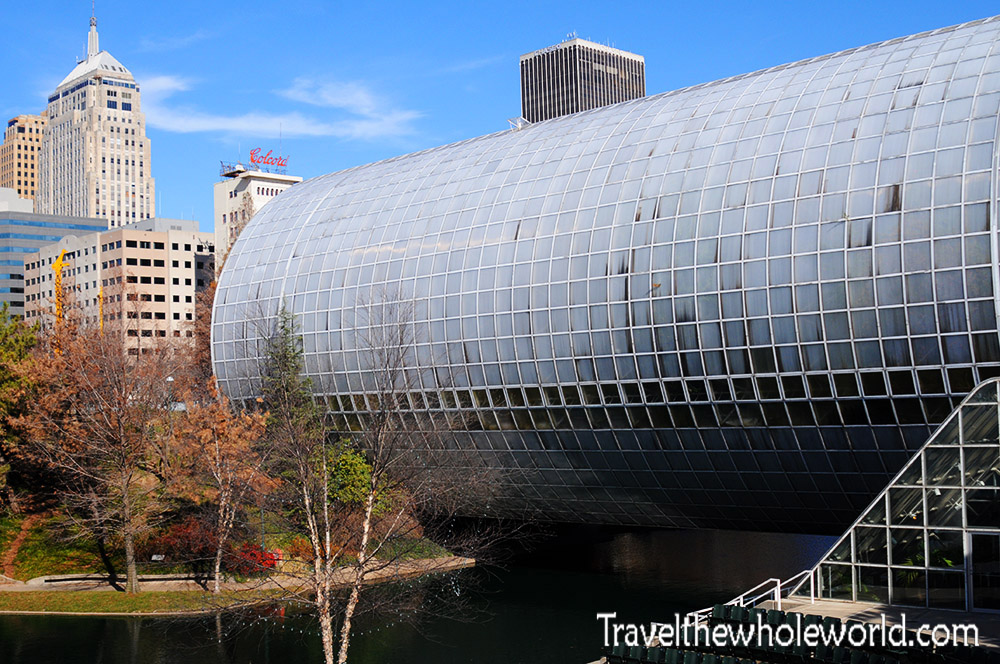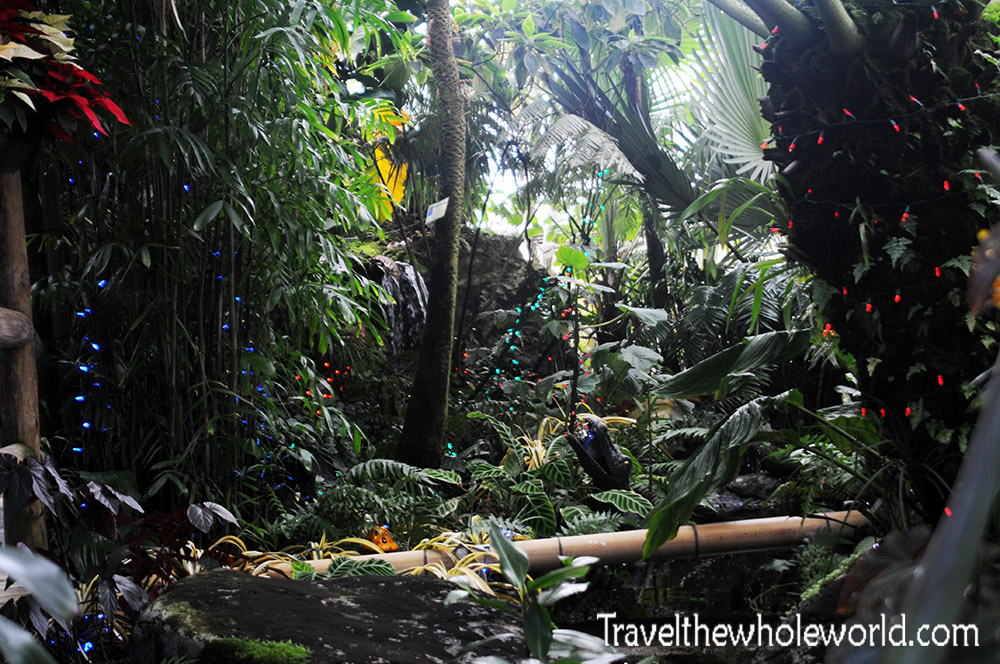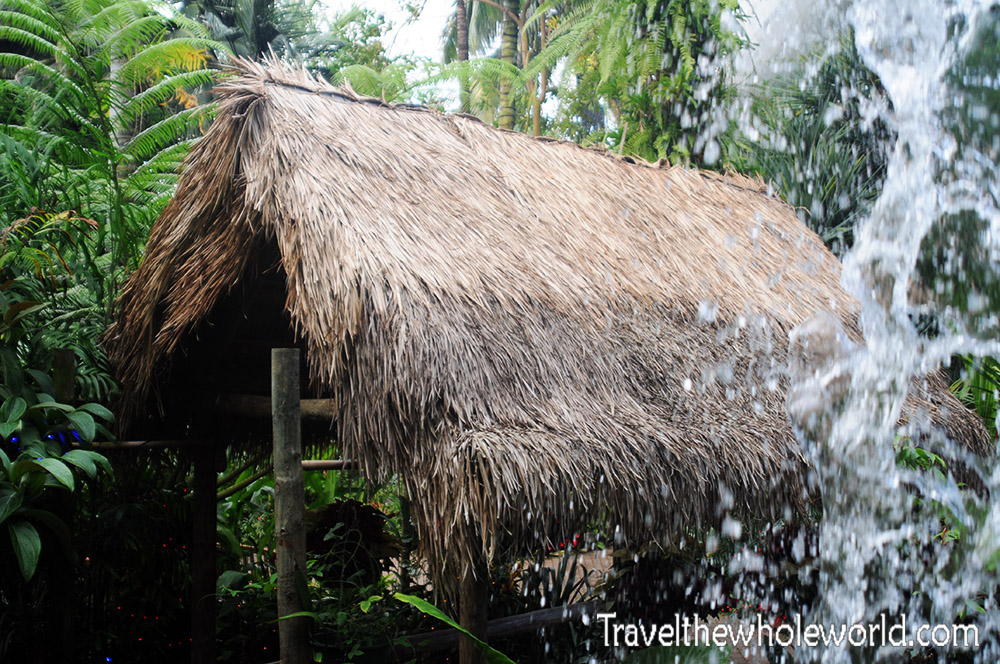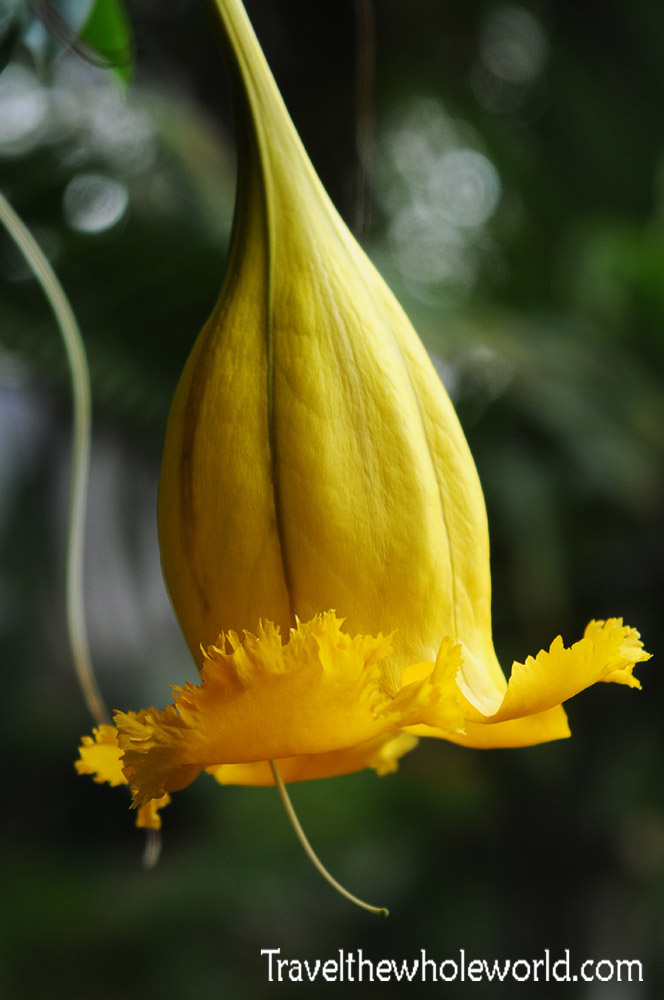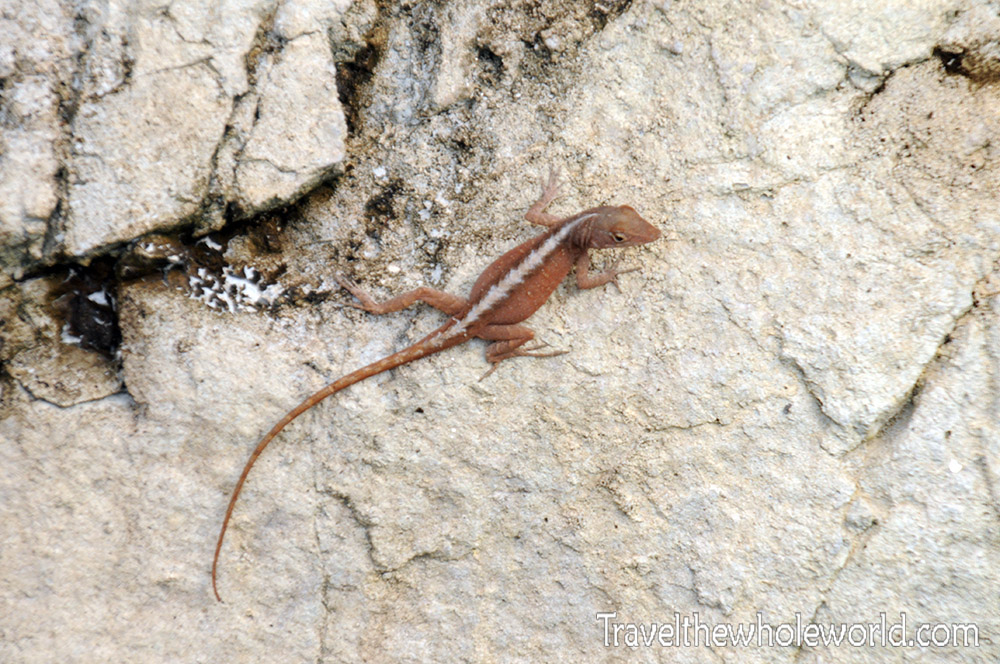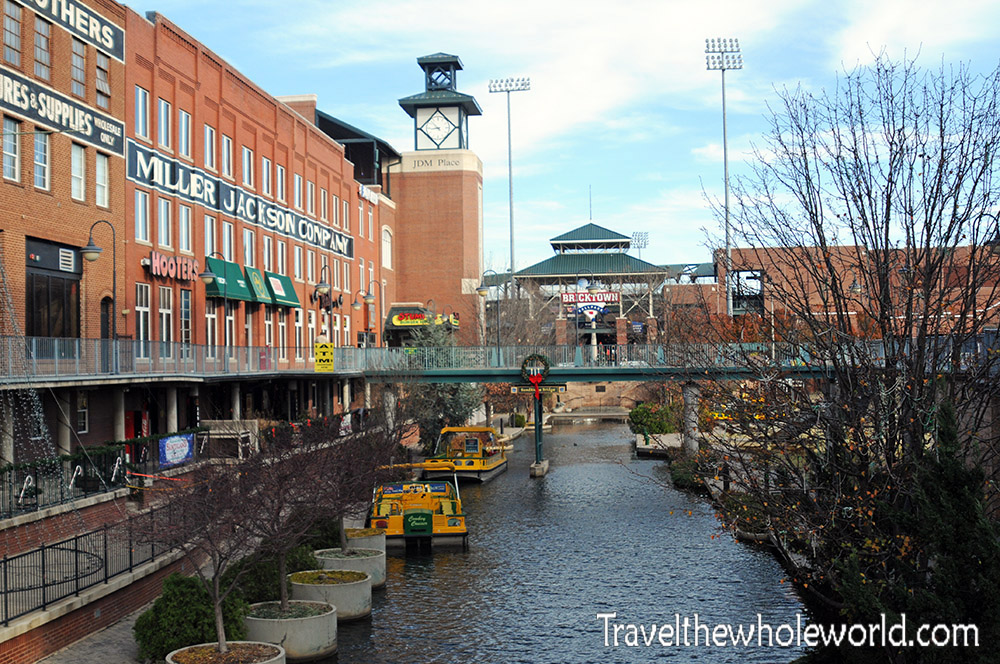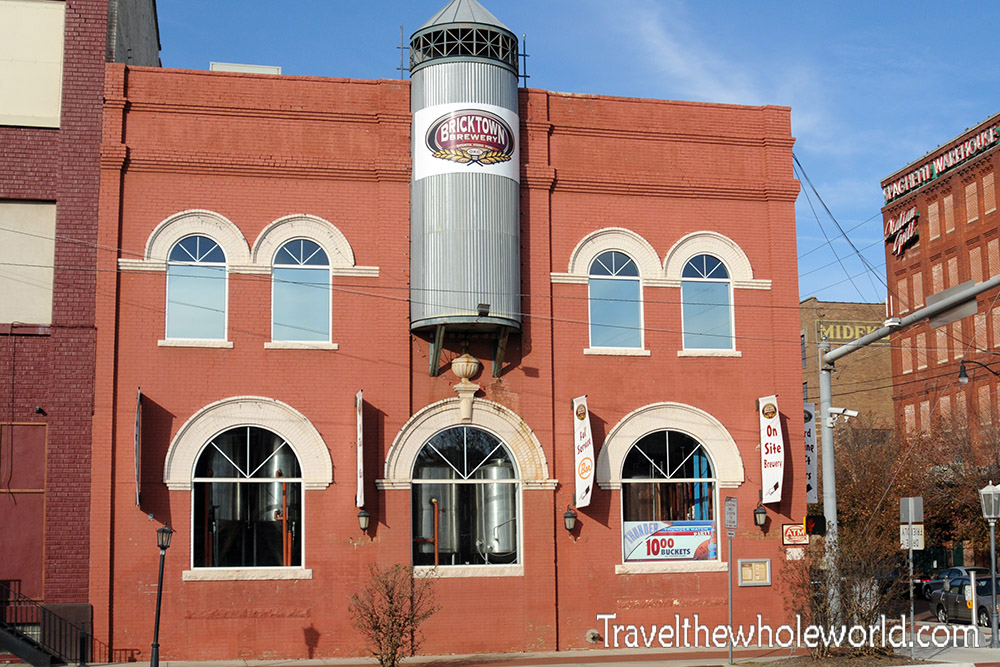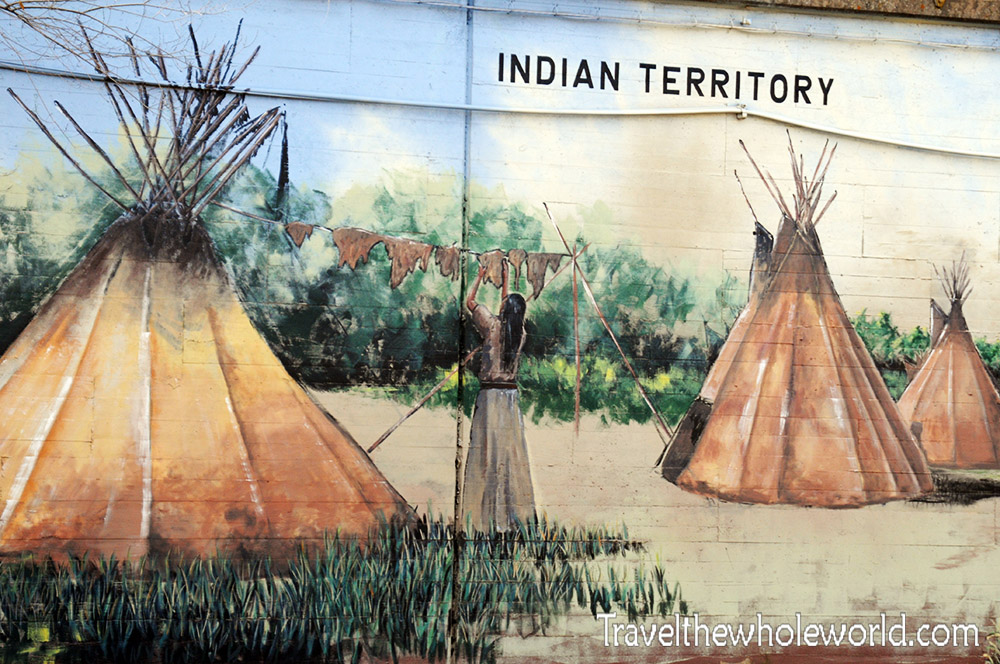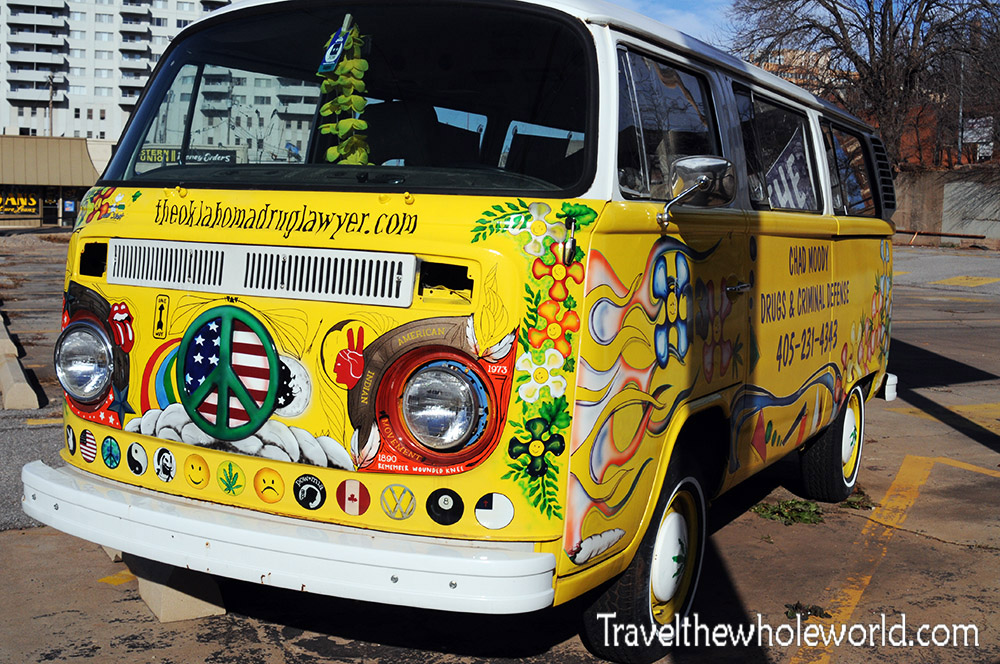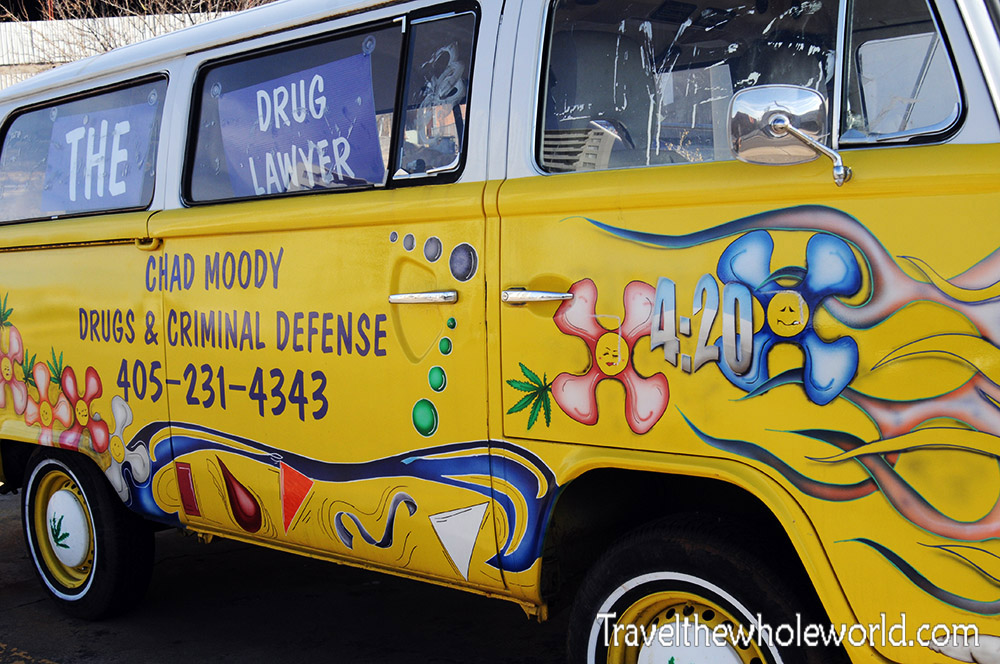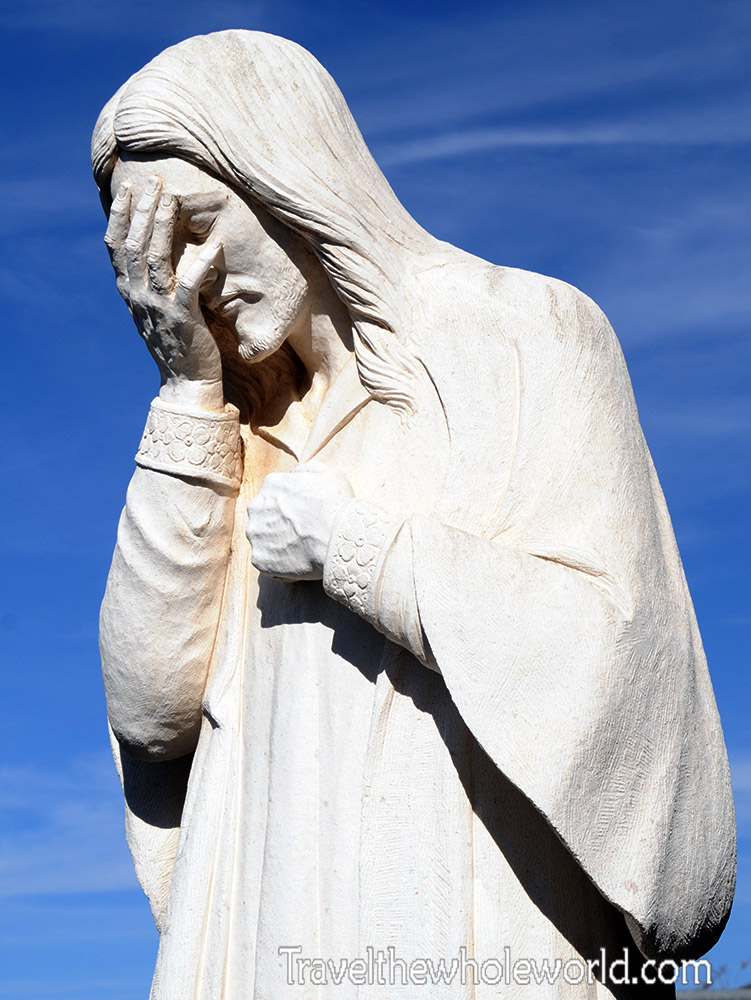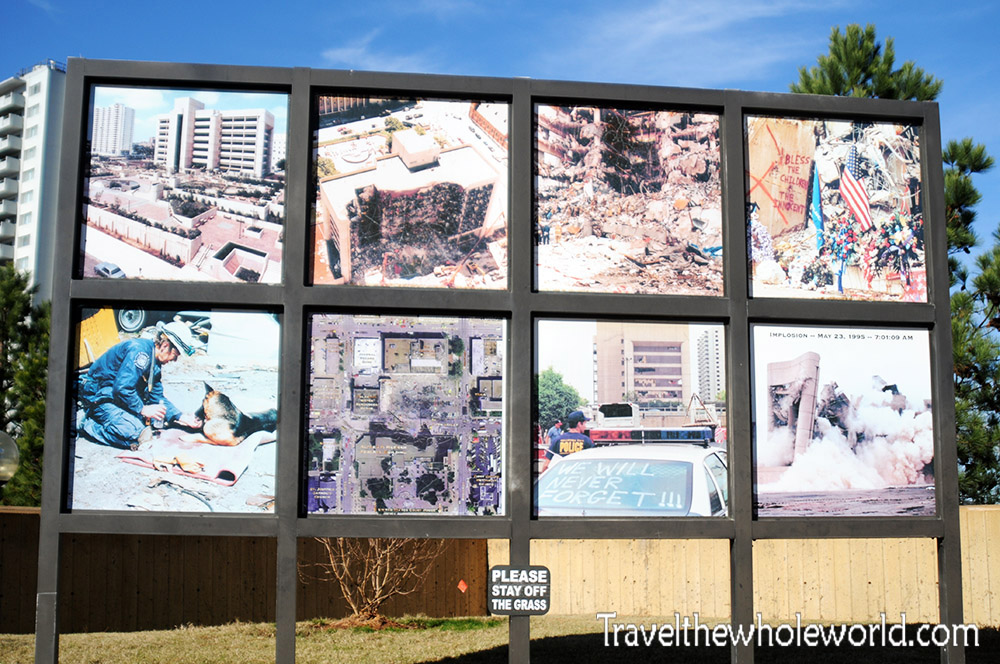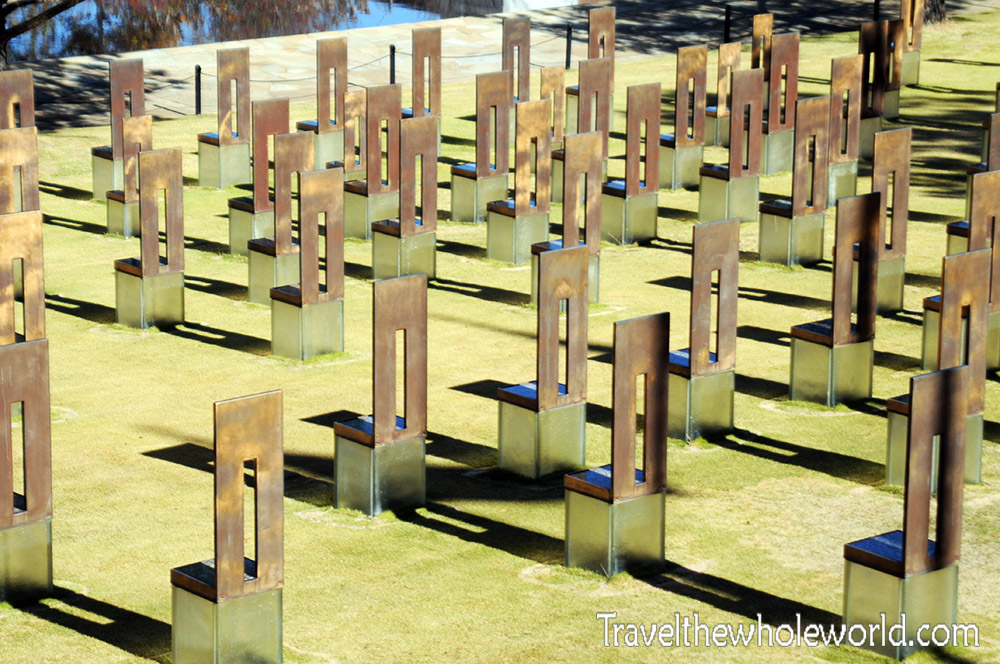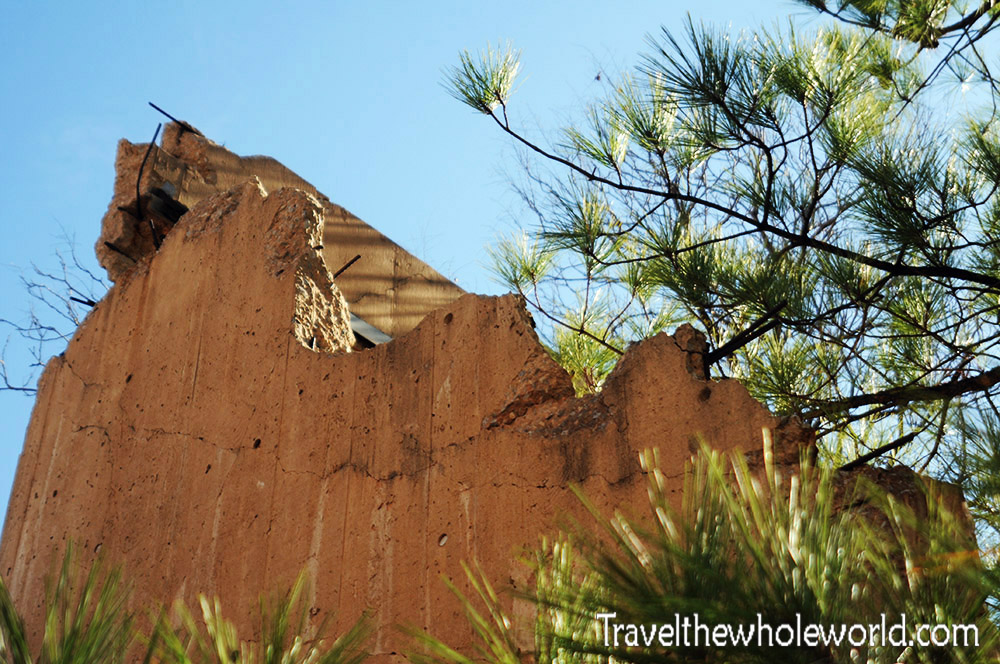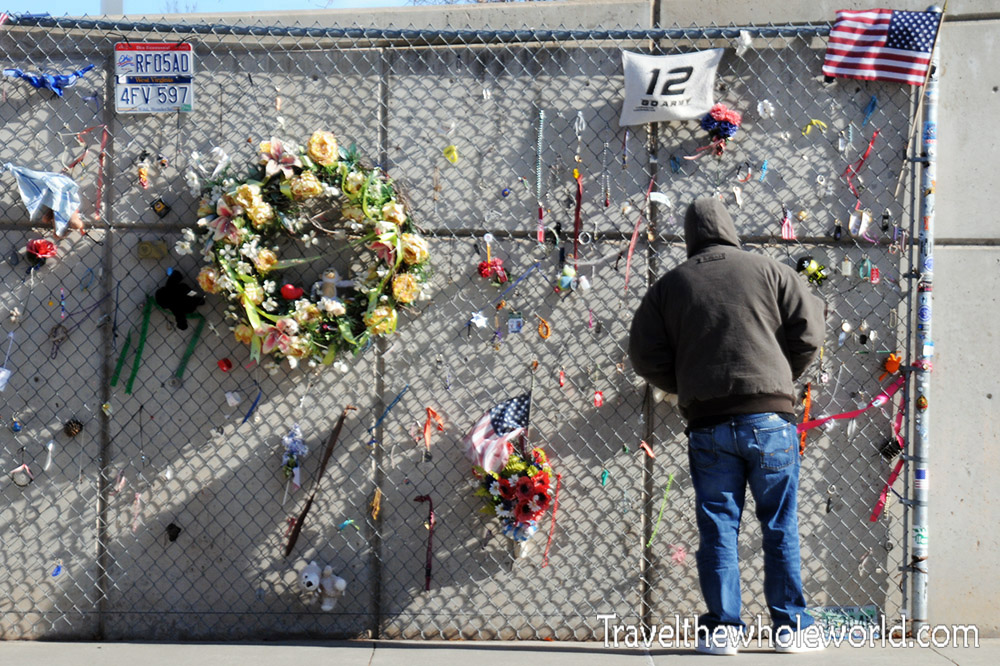Visiting Oklahoma City
Oklahoma City is both the largest city and state capital of Oklahoma. I figured it’d be on the small side but I was way off. Oklahoma City’s population is over 600,000 and is actually the 27th largest city in the United States. Above is the usual photo I start off with, the state capitol building. While Texas gets all the fame for having oil, Oklahoma is also an oil rich state. Oklahoma actually has so much of it that there are even active oil rigs on the capitol buildings property!
I don’t have any good photos of the skyline or downtown, but the city is certainly bigger than I expected. I assumed the streets would have a few medium sized buildings and be relatively empty like other state capitols I’ve visited. The only negative thing I can say about Oklahoma City was the lack of people in the city center. Despite being a weekend most of it felt deserted but that could have been because I visited during the winter when it was freezing outside. There seem to be enough people that the city provided trolleys as photographed below.
Overall I was pretty impressed with Oklahoma City. The city seemed pretty clean and had a new look to it. The city is also still growing, with new buildings such as this one above popping up in the city center. A few years after I visited a pedestrian bridge known as Skydance was built. The 380 foot (115 meter) long bridge was voted one of the most country’s top 50 public art projects. I was sad it didn’t exist when I visited, but I’d like to return to the city in the summer time anyway! Below is the city’s Municipal Building.
Immediately outside the capitol area of Oklahoma City is Harn Homestead, one of the most upscale and expensive real estate areas in Oklahoma. One of the old Victorian mansions has been turned into a museum that was built when the city was first founded in 1889. The Harns were a wealthy family that first moved to Oklahoma City during what was called the Great Land Run. I didn’t visit the museum and regret that, but it shows how life was for late 19th century settlers .
Oklahoma City is divided up into several districts, and one of the best to visit is its art district. It almost seems like there are an endless amount of museums, theaters and memorials in this area. I think if you’re really into museums you could easily spend an entire weekend in the art district alone.
I definitely didn’t do a lot of things that I should have while in Oklahoma City. One of the obvious was visit some of the galleries and museums. Instead I wanted to be outside even though it was winter time and I enjoyed what I could find along the streets. This giant piece of artwork was probably the most unique that I found in the city and my favorite.
One place that I didn’t miss in the art district was the Myriad Gardens; a 17 acre botanical garden located inside a large capsule like building. The inside of the botanical garden has full grown trees, and many unique plants that are typically found in wet tropical areas of the world.
For those that live in the Great Plains of Oklahoma and don’t get a chance to travel, this would be a perfect place to experience what a tropical rainforest is like. The photos above and below were taken from inside the Myriad Gardens.
There’s a enormous variety of plants here, and I most certailnly can’t photograph them all. I decided to choose this unique yellow flower that I came across in the Myriad Gardens. Aside from all the flora, there is actually a little bit of wild life in the gardnes as well! This small lizard I caught running around inside as well as a few butterflies.
Another district I visited in Oklahoma City was Bricktown. Of course just about all the structures here are made out of brick, but they are home to several nice restaurants, breweries, and shops. One section even has a little waterway where you can take boat tours throughout the district. I didn’t make it out here at night time, but I imagine it’s a more lively place then.
The photograph above shows a the Bricktown Brewery. On their website they jokingly claim that Oklahoma City was just a small remote town but that all changed when the brewery opened their doors in 1992. This brewery is the original but they have since opened another one in Tulsa, and a third all the way in Texas.
I always love photographing giant murals in see painted in cities. This one was also in Bricktown and came without an explanation. Obviously its showing what Native American life was like in the Great Plains before the arrival of settlers. I’m not sure of the tribes that lived in this part of the country, but I know Oklahoma has over 40 Native American languages,
more than any other state in America!
While exploreing Oklahoma city on foot I came across this vehicle advertising law services. I couldn’t resist taking pictures this guy’s crazy method of advertising. His psychedelic van is painted bright yellow with flowers, 4:20 signs, and many symbols associated with drugs. I suppose the ‘drug lawyer’ proves he understands his clients and the system.
Over 20 years ago Oklahoma City was the site of one of the biggest tragedies in the country. More than likely younger generations aren’t even aware the attacks occurred. As a matter of fact though, before 9/11 this was the greatest terrorist attack in the United States. At 9:02 in the morning on April 19th 1995, Timothy McVeigh detonated a truck bomb that destroyed the Murrah building in the city center killing 168 people. The photo above shows a statue of Jesus that is part of the Oklahoma City Bombing memorial. Below are photos taken at the time of the attack that show the massive destruction.
Timothy McVeigh’s motivation was basically revenge on the US government for what he believed to be increasingly tyranny. I remember I was 13 years old at the time and my history class was interrupted and we all watched the story unfold live on TV. It’s hard to believe more than 20 years have passed since the bombing occurred. Only 90 minutes after the attack, Timothy McVeigh was arrested, charged with domestic terrorism and put to death in 2001. Also part of the memorial are these empty chairs above. There are 183 placed here, one for each victim. Seeing how many chairs there are certainly puts things into perspective on all the lives lost.
This photo shows the remains of the Murrah building. You can imagine how powerful the blast was to destroy such a massive building. This part of the building is called the Survivor’s Wall, and also contains a plaque with the names of those who lost their lives when the bombing occurred.
The most touching part of the memorial is the personal belongings people leave behind. Above and below are some of the personal items that belonged to victims and other items left behind in their memory; license plates, a workers glove, a teddy bear, American flags and flowers.
